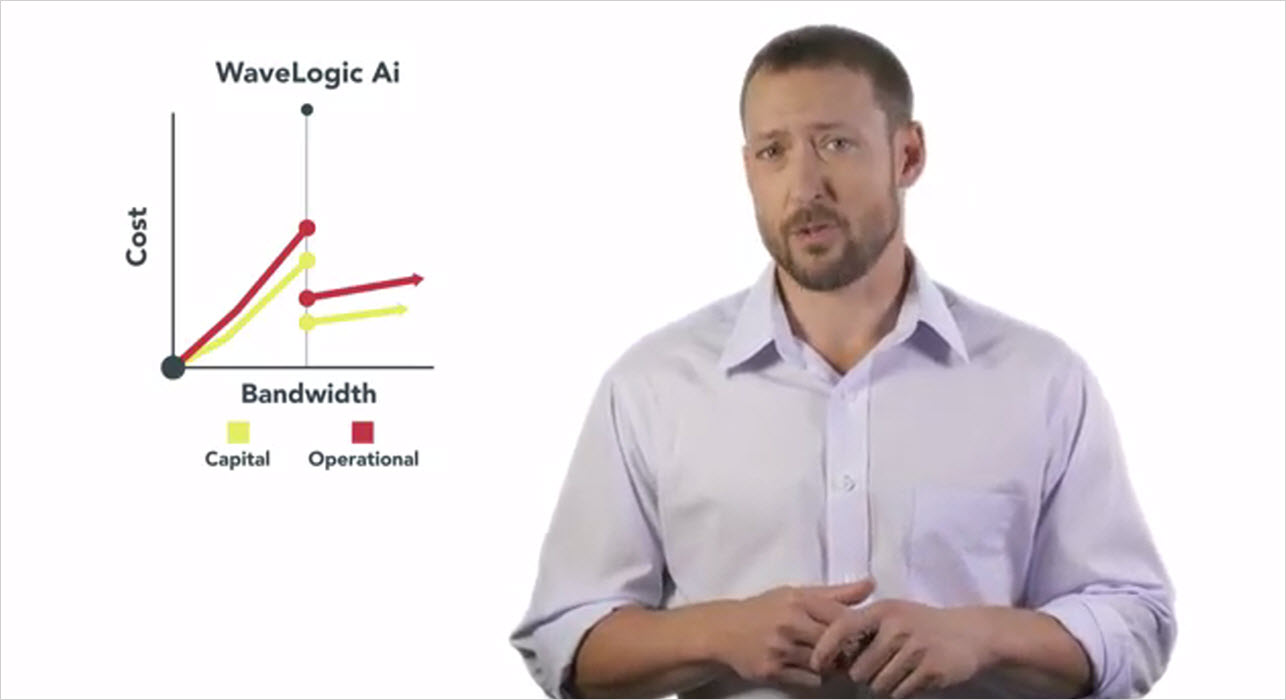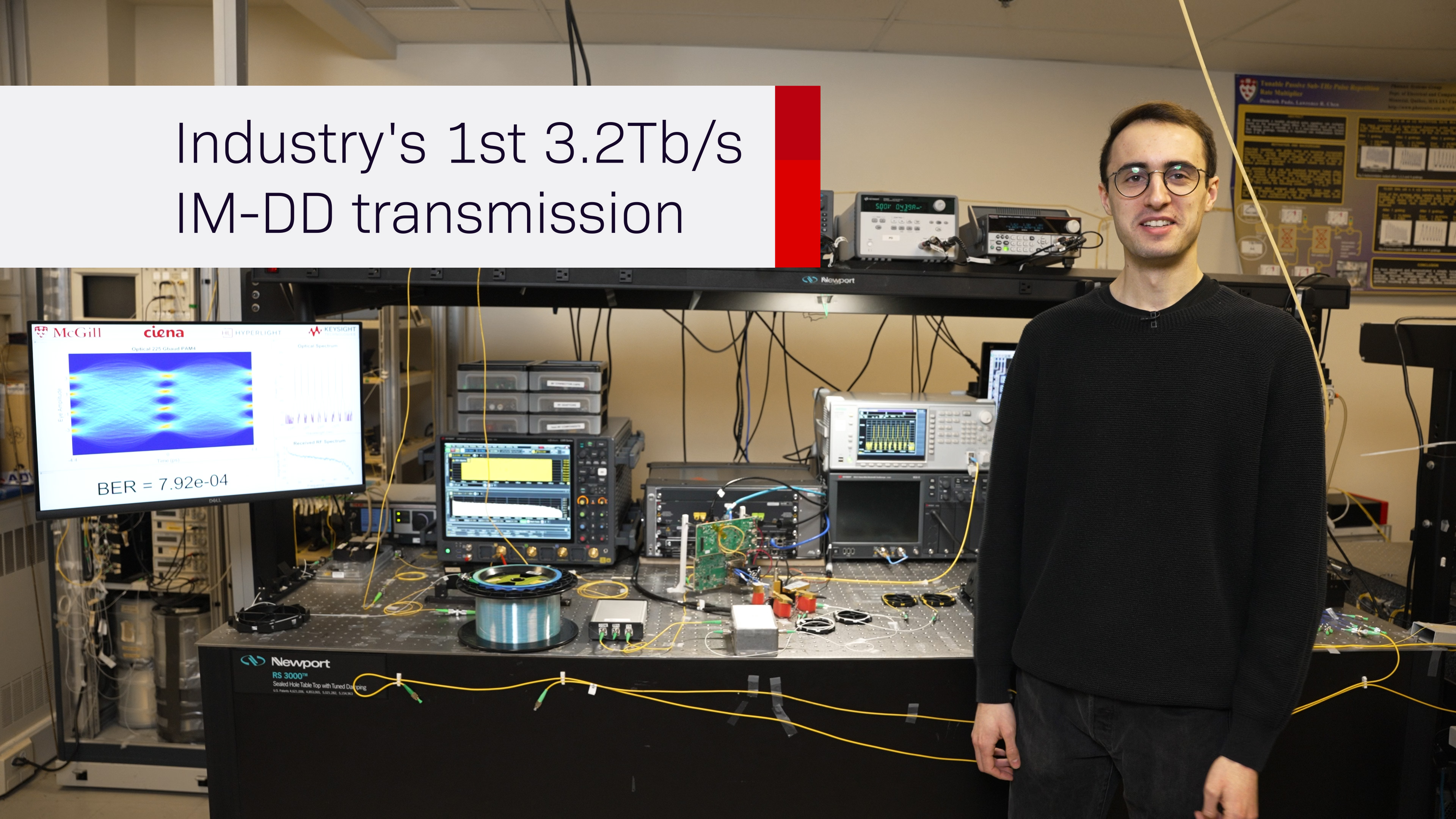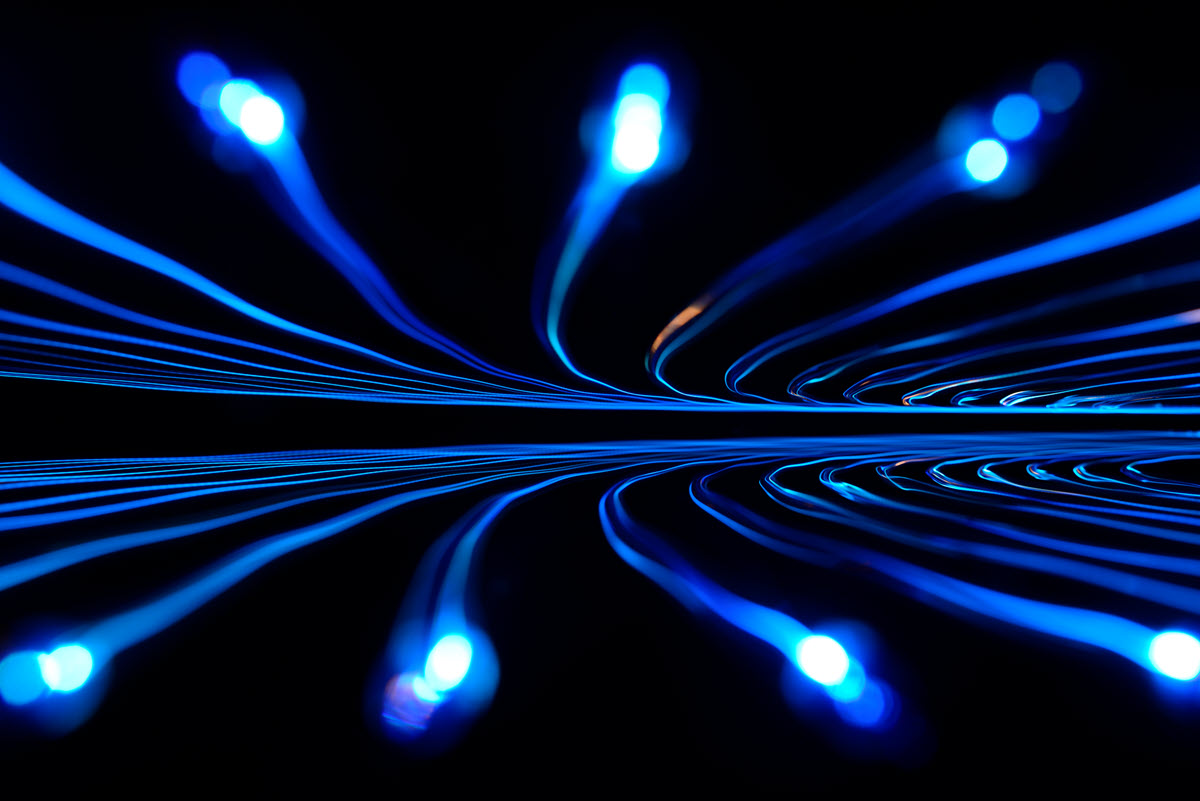Your Top 4 Questions Answered About WaveLogic Ai
Since we announced the launch of WaveLogic Ai late last year, we’ve talked with scores of excited engineers, customers, media, and analysts interested in digging deeper into how WaveLogic Ai is able to do what it does. We’ve since encountered a number of recurring questions being asked and while many of these details are covered in Ciena’s recent WaveLogic Ai Chalk Talk video featuring Joe Shapiro, we’ve provide the following Q/A blog so that you can get right into some of these deeper details. Here are the answers to the top 4 questions we've heard about WaveLogic Ai:
1. What unique technology does Ciena’s WaveLogic Ai use that yields better performance?
Our latest generation WaveLogic Ai coherent chipset sets new standards for reach and capacity. It can provide longer reach at a given capacity per wavelength or, alternatively, higher capacity per wavelength. It is all about increasing network scale and driving down cost per bit per km by reducing the number of coherent modems (or transponders) that you need to deploy. This results in lower capex, as well as reduced power and footprint.
So how do we do it? The unique digital signal processing (DSP) implementation within WaveLogic Ai and the algorithms implemented in the ASIC by designers who have the most cumulative coherent technology experience in the industry are the single largest contributors to performance. These algorithms include soft FEC, electronic dispersion compensation, and advanced coding techniques that are second to none. One of the techniques used in WaveLogic Ai to squeeze as much system performance out of the modem as possible is multi-dimensional coding.
2. Why did Ciena select 56Gbaud as the baud rate for WaveLogic Ai?
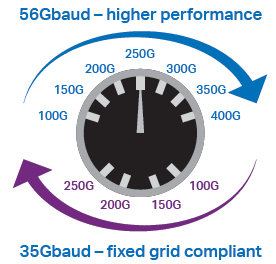 One of the new features in WaveLogic Ai is its ability to operate at a selectable baud rate of 35Gbaud or 56Gbaud. The new 56baud is a higher symbol rate than other coherent solutions in the market today – which means that it processes more symbols per second, and can extend 100G or 200G channels at significantly farther distances than lower baud solutions.
One of the new features in WaveLogic Ai is its ability to operate at a selectable baud rate of 35Gbaud or 56Gbaud. The new 56baud is a higher symbol rate than other coherent solutions in the market today – which means that it processes more symbols per second, and can extend 100G or 200G channels at significantly farther distances than lower baud solutions.
This is possible because with a higher baud, a constellation with fewer bits per symbol can be used to deliver a given capacity per carrier/wavelength. Fewer bits per symbol means more distance between constellation points, which enables a higher signal-to-noise ratio, ultimately resulting in longer possible transmission distances. Exactly how far the signal travels depends on the DSP algorithms used.
So why did we select 56Gbaud? It was deemed the best trade-off between high-speed component technology availability/maturity and strong single-carrier 400G reach.
3. Why is Ciena implementing so many channel capacity options, from 100G to 400G in 50G increments? What modulation formats are you using for this and why does fine granularity matter?
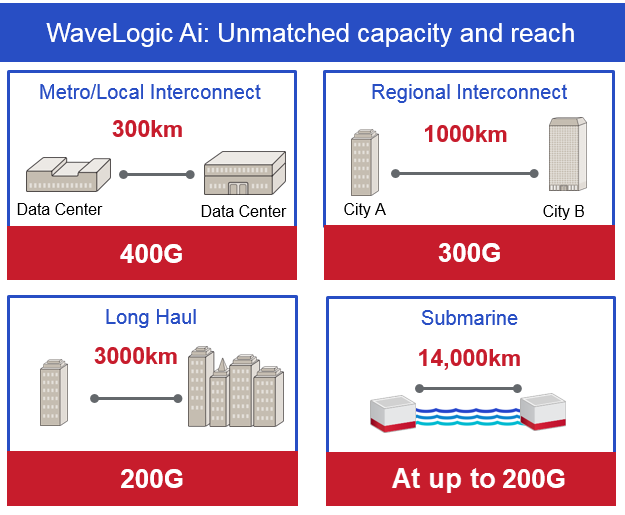 One of the key new features of WaveLogic Ai is its ability to provides a range of selectable capacities, from 100G to 400G in 50G increments. This fine granularity allows operators to maximize network efficiency and optimize line capacity.
One of the key new features of WaveLogic Ai is its ability to provides a range of selectable capacities, from 100G to 400G in 50G increments. This fine granularity allows operators to maximize network efficiency and optimize line capacity.
To do this, WaveLogic Ai uses a 56baud rate, support for higher complexity signal constellations, as well as multi-dimensional and other advanced coding techniques, to provide near-continuous tradeoff between capacity and performance.
With WaveLogic Ai, operators can achieve single carrier 400G for metro or metro DCI applications, 300G for regional distances, 200G for long haul applications, and 100G for unregenerated 7000km terrestrial applications. Chromatic dispersion compensation enhancements have been implemented that allow for operation over the longest next generation subsea cables, up to 14,000km.
If you don’t have granular tunable capacity flexibility, you end up running channels at sub-optimal capacity with excess margin, leaving revenue on the table.
4. How exactly does WaveLogic Ai lay the foundation for the autonomous or self-driving network?
As new and unpredictable demands are hitting the network and “on-demand” is the only acceptable way of accessing content, operators need the right technology and analytics at their disposal to help them respond quickly with intelligent, informed decisions. Increased automation will be required to successfully scale networks moving forward.
To meet that end goal, WaveLogic Ai gives operators access to unprecedented levels of real-time network performance information so they can determine how efficiently the network is operating and use this intelligence to accurately engineer the network for optimal capacity, for any stage in the network’s life. This data can be accessed across a range of operating models via Ciena software as well as with Open APIs with end-user custom software
Want to get more details around the technology innovations and associated economic and operational benefits that WaveLogic Ai brings to the optical industry? Ciena’s Joe Shapiro, Product Line Management, provides the inside scoop in our new WaveLogic Ai Chalk Talk video below. Still hungry for more? Watch the WaveLogic Ai on demand webinar. With the flexible capacity options of WaveLogic Ai, achieving optimal capacity across the network of the future can be a reality.

